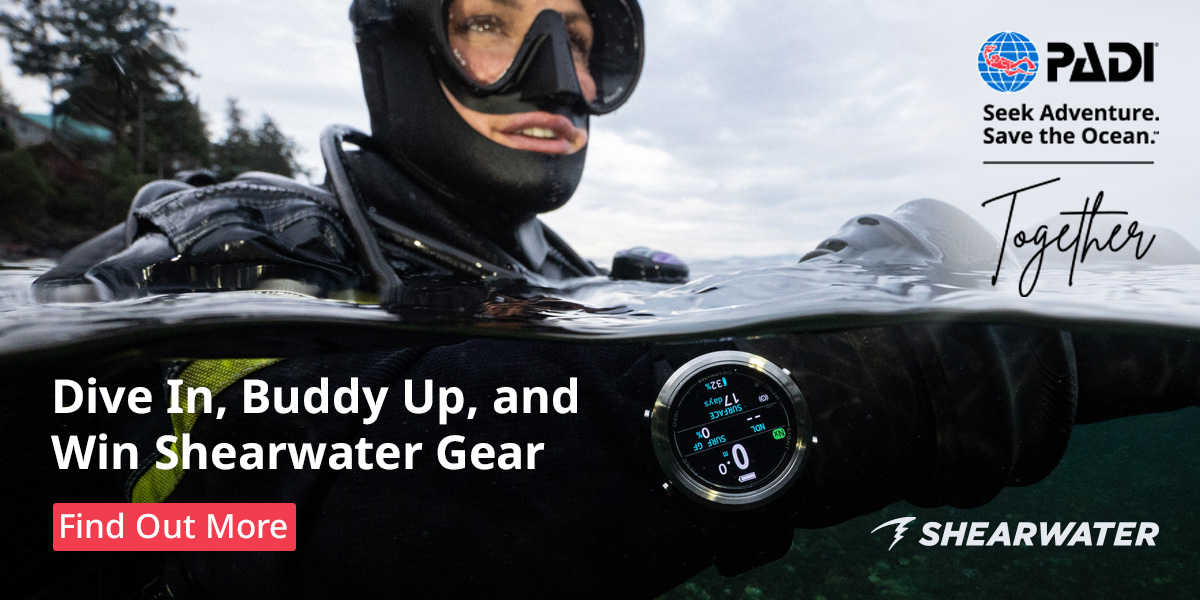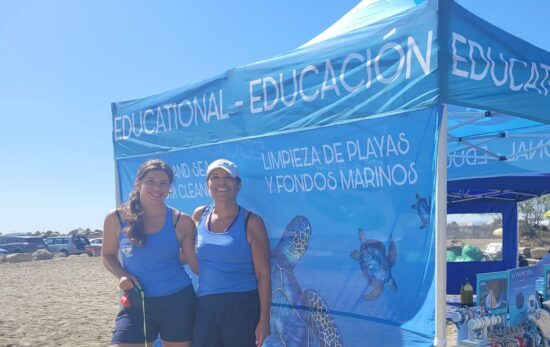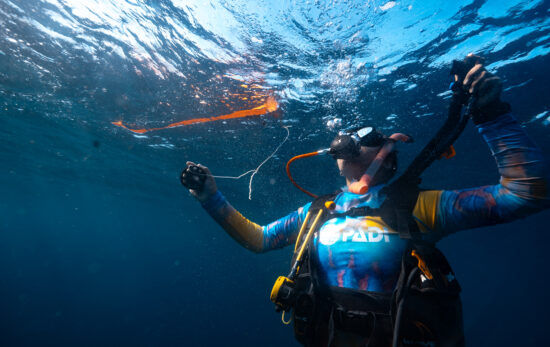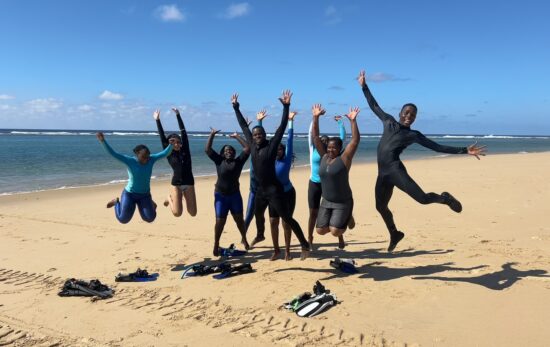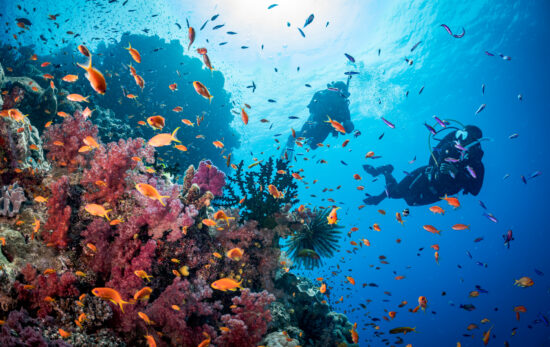When I signed up for my Divemaster course, I didn’t feel like PADI Divemaster material. I felt more confident about my diving skills after completing the PADI Rescue Diver course, but I still didn’t see myself as a dive leader.
For reasons I couldn’t fathom, my instructor insisted I would make a good Divemaster, despite the fact that:
- What I knew about dive gear would fit on a yellow sticky note.
- To find my way back to the boat or shore, I sometimes had to surface.
- My buoyancy was good, but nothing like the dive guides I’d seen.
After serious nudging from my fellow Rescue Diver classmates, I decided to sign up. I’m so glad I did!
I incorrectly thought understanding how dive gear works and being able to lead a dive were prerequisites for starting the PADI Divemaster course. Not so! These are things you learn and master as part of your Divemaster training. Here’s what’s actually required.
PADI Divemaster Requirements (Prerequisites)
To start PADI Divemaster training, you must be at least 18 years old and have the following certifications:
- Open Water Diver (or a certification that meets this requirement)
- Advanced Open Water Diver (or a certification that meets this requirement)
- CPR and First Aid training in the past 24 months
- Rescue Diver (or a certification that meets this requirement)
You also need:
- At least 40 logged dives
- Medical clearance to dive within 12 months
There are also some important qualities every Divemaster should have that can’t be quantified. These are the things my instructor saw in me:
- A commitment to protecting the environment
- Strict adherence to safe diving practices
- A caring nature and desire to help people
Note: Divers younger than 18 but at least 15, have at least 20 logged dives and hold PADI Advanced Open Water Diver and PADI Rescue Diver certifications may enroll in the PADI Junior Divemaster program. Junior Divemaster candidates complete a significant portion of the Divemaster course, but not all, and additional training is required when the Junior Divemaster turns 18 to become a Divemaster.

How to Prepare for the PADI Divemaster Course
There are so many ways to prepare for the PADI Divemaster course. Here are some of our favorite steps to ensure you are ready to take the next step and become a professional diver.
Dive! Dive! Dive!
You need 40 logged dives to start the PADI Divemaster course and 60 logged dives to earn the certification. If you don’t have at least 40 dives, grab a tank and get going!
While you’ll dive a lot during your Divemaster training, you won’t necessarily make 20 dives.
Picking up a few PADI Specialty certifications is a good way to improve your skills while getting the dives you need.
- If, like me, your underwater navigation skills are iffy, take the Underwater Navigator specialty.
- Can you hover for a minute without finning or sculling? If not, take the Peak Performance Buoyancy specialty.
- The PADI Deep Diver and PADI Search and Recovery specialty certifications are two others to consider because the Divemaster course includes a deep diving and search and recovery workshop. If you have these certifications you can, at the instructor’s discretion, skip those workshops.
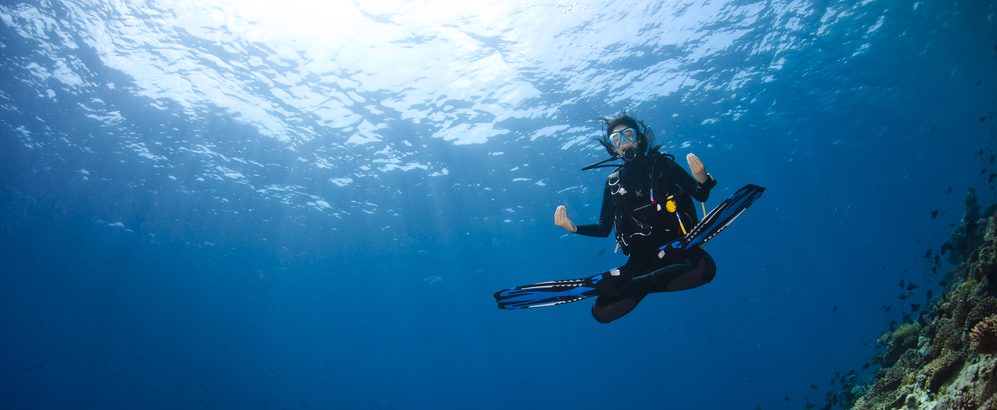
Assess Your Scuba Skills
Divemaster candidates should be comfortable performing all the basic scuba skills learned in Open Water Diver. If it’s been a while since you did a mask removal and replacement or gear removal at the surface, put some time into improving any weak areas, especially buoyancy. You don’t want to be the Divemaster candidate who can’t hover.
If it’s been a while since you took the Rescue Diver course, review those student materials as well. You’ll be expected to know how to respond to an unresponsive, non-breathing diver at the surface, among other skills. You’ll also need current (within the past 24 months) first aid and CPR training.
Find an Instructor
If you already have a favorite instructor, tell them you’re thinking about becoming a Divemaster. Some dive shops won’t offer a class until they have enough people who are interested.
Prefer to shop around? Here’s some advice on how to choose a scuba instructor.
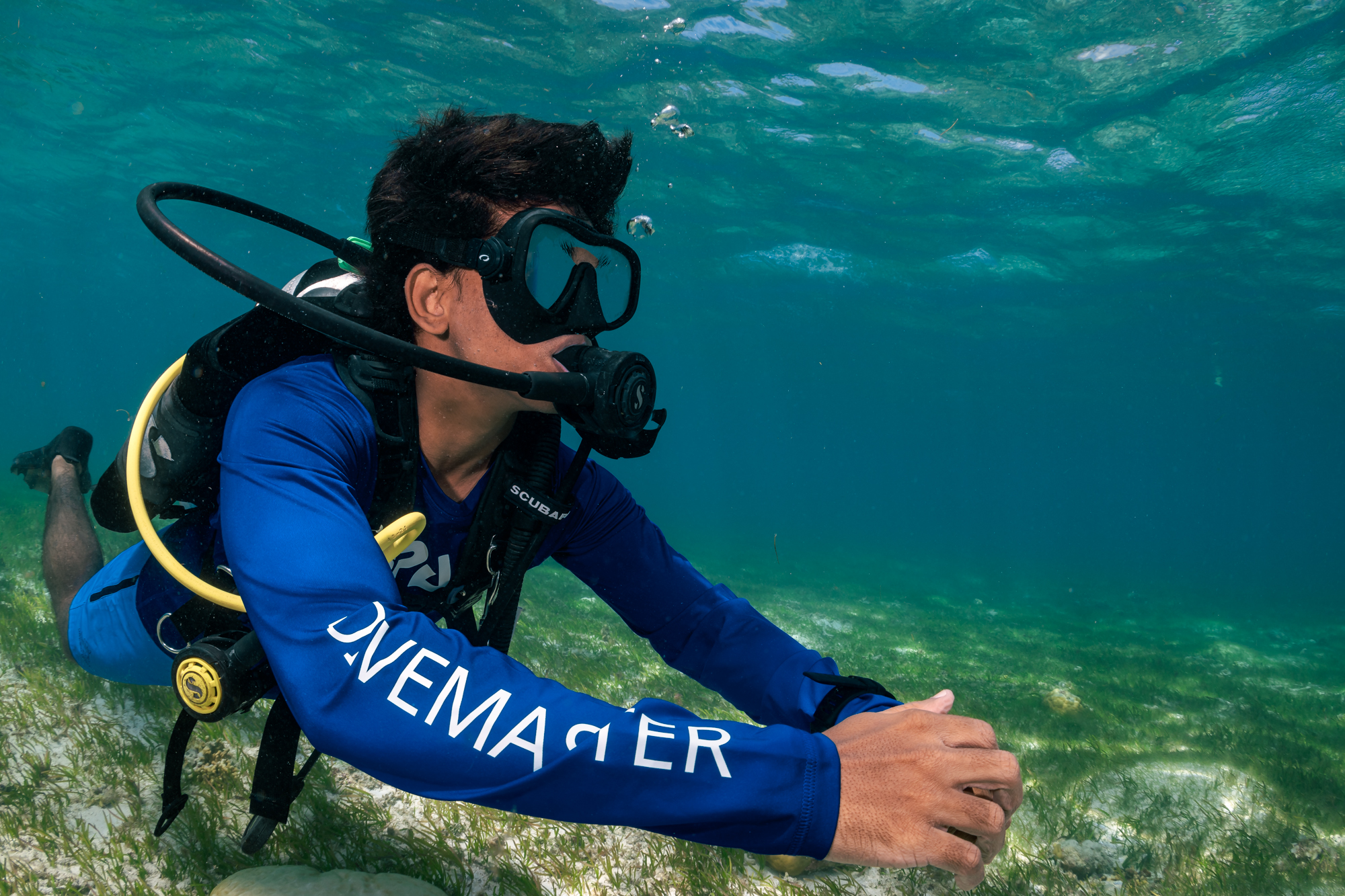
Speak to Other Divemasters
It goes without saying that someone who has completed the Divemaster course can offer you a far more realistic set of expectations! If you’re unsure where to take your course, speaking to others who completed their Divemaster training in various locations might help you make a decision.
To get in touch with other Divemasters, consider joining groups like Dive Travel or Divers Around the World. Once joined, other Divemasters would likely love to respond to posts asking for experience with the course!
Take Charge of Your Overall Health
It’s no secret that the Divemaster course requires a good level of personal health and fitness. From carrying cylinders (tanks) to practicing rescues and the famous swim tests, your body will benefit from being in good condition. If you’re able to, aim to increase your overall fitness level through regular exercise and a healthy, balanced diet (remember to get medically cleared for exercise, if necessary).
Medical Requirements
Before enrolling, make sure you meet the medical requirements for PADI Divemaster. In short, you must have been medically evaluated and cleared for diving by a physician within 12 months.
Download the diver medical form and have it signed by a physician. If your doctor has questions or if you need assistance finding a physician, contact DAN (Divers Alert Network). DAN can connect you with someone in their worldwide network of physicians who serve the diving public.
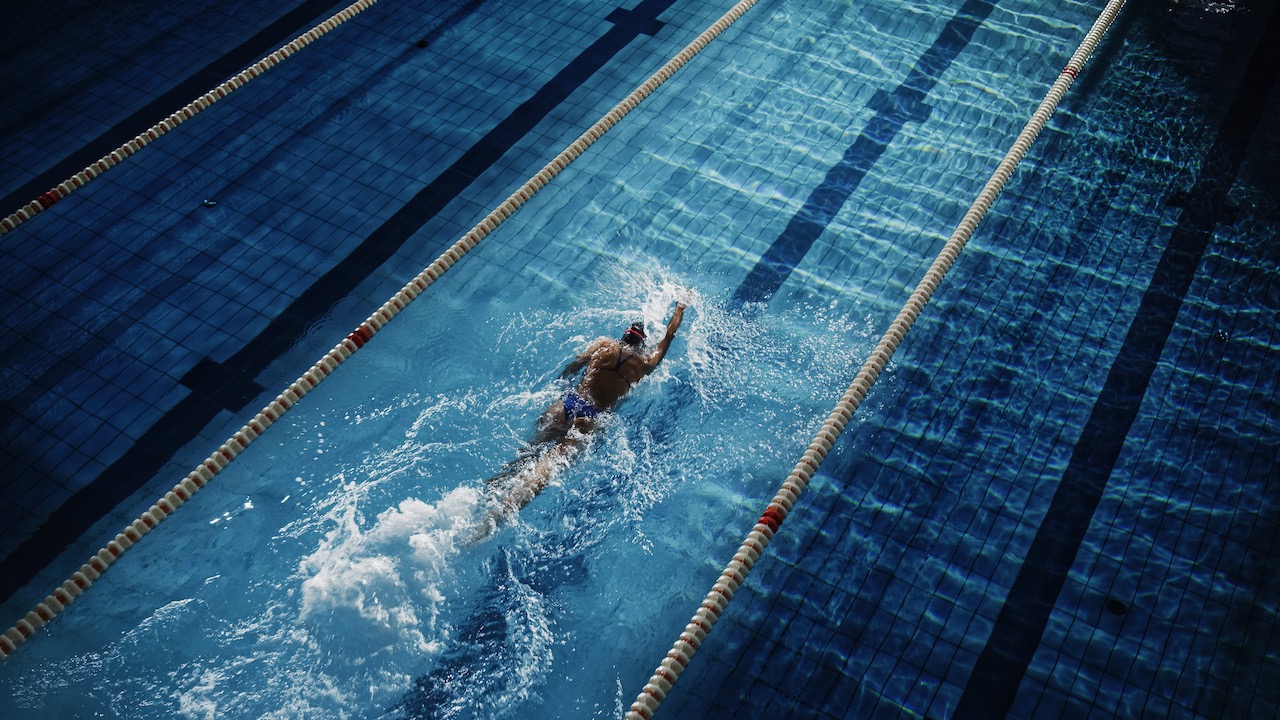
How To Prepare for the Divemaster Swim Test
The PADI Divemaster course includes three swimming assessments and a 15-minute treading water exercise. If you don’t currently spend a lot of time in the water (diving, surfing, swimming, etc.), build up your endurance before the course.
Here are the PADI Divemaster swim test (a.k.a. water skills) requirements
- Swim 400 meters/yards nonstop without swimming aids. Use any stroke or combination of strokes.
- Swim 800 meters/yards face down – nonstop – using mask, snorkel and fins only. Use of arms or flotation aids is not permitted unless the candidate has a physical impairment.
- Tow or push a diver for 100 meters/yards nonstop, at the surface, without assistance. Both divers wear full scuba equipment.
- Wearing only a swimsuit, tread water, bob or float using no aids for 15 minutes. During the last two minutes, hold hands (not arms) out of the water.
Note: Accommodations can be made for Divemaster candidates with physical impairments.
I’ve been a lap swimmer most of my life, so I didn’t practice holding my hands out of the water for two minutes. Much to my surprise, this last part of the treading water skill was a struggle. I completed it successfully thanks to a fellow Divemaster candidate named Keith.
Earlier in this article, I mentioned there are qualities every Divemaster needs that are hard to quantify. Keith went on to be an exceptional Divemaster (and Instructor) because of his caring nature and desire to help people, including his fellow students!
Keith was missing one of his legs below the knee, but he was treading water and holding his hands up with the rest of us. Because of his physical impairment, Keith could have skipped the hand-raising challenge or the entire skill, but he didn’t. He hung in there, making jokes and encouraging everyone. What an inspiration!
Steps To Take To Prepare for the Swim Test
To ensure you’re fully prepared for the swim test before your course, consider exploring the options below to get there.
Practice the Test
First things first, head down to a pool or the ocean with some buddies and practice the test requirements yourselves. It may help give you an idea of which areas you’re struggling with and which you are comfortable with. Once you’re clear on your abilities, you can work with your buddies to help each other improve.
Swim Regularly
You’ve probably heard before that “practice makes perfect,” and it’s no different regarding the Divemaster swim test! Set a weekly schedule for yourself and a buddy or two to practice swimming the 400-meter/yard and 800-meter/yard lengths required in the test. The more you practice, the faster your body and mind will get used to the test.
Work on Your Cardiovascular and Mental Fitness
Each section of the swim test relies heavily on both cardiovascular and mental fitness. First, set yourself up for success with regular cardio sessions. Whether that’s walking, running, hiking or biking, any form of exercise that challenges your cardio system will be beneficial for increasing endurance.
Secondly, mental fitness plays a key role in many aspects of the Divemaster course, not just the swim test. Socializing, practicing gratitude, and connecting with others are just a few ways to improve your mental fitness.

Looking for More?
Want to learn more about what it takes to become a PADI Divemaster?
Here are two articles you might find helpful:
Psst! If you’re reading this, odds are you have what it takes to become a Divemaster. Why? Because a good Divemaster is thorough, responsible and pays attention to the small things.
Even if you don’t feel like a dive leader yet, you’ll get there with time and practice. That’s what the PADI Divemaster course is all about! By the end of your Divemaster training, you’ll have transformed from a diver into a scuba diving professional.
Start Your PADI Divemaster Training – FREE!
Learn more about the concepts, skills and knowledge necessary to become a PADI Divemaster. Try the free online course Intro to Divemaster. There’s no commitment and no credit card required; it’s truly free. Get started in just a few clicks:
- Create a PADI account or log in to your existing account.
- From the Training dashboard, select Introduction to Divemaster and choose your preferred language to get started.

